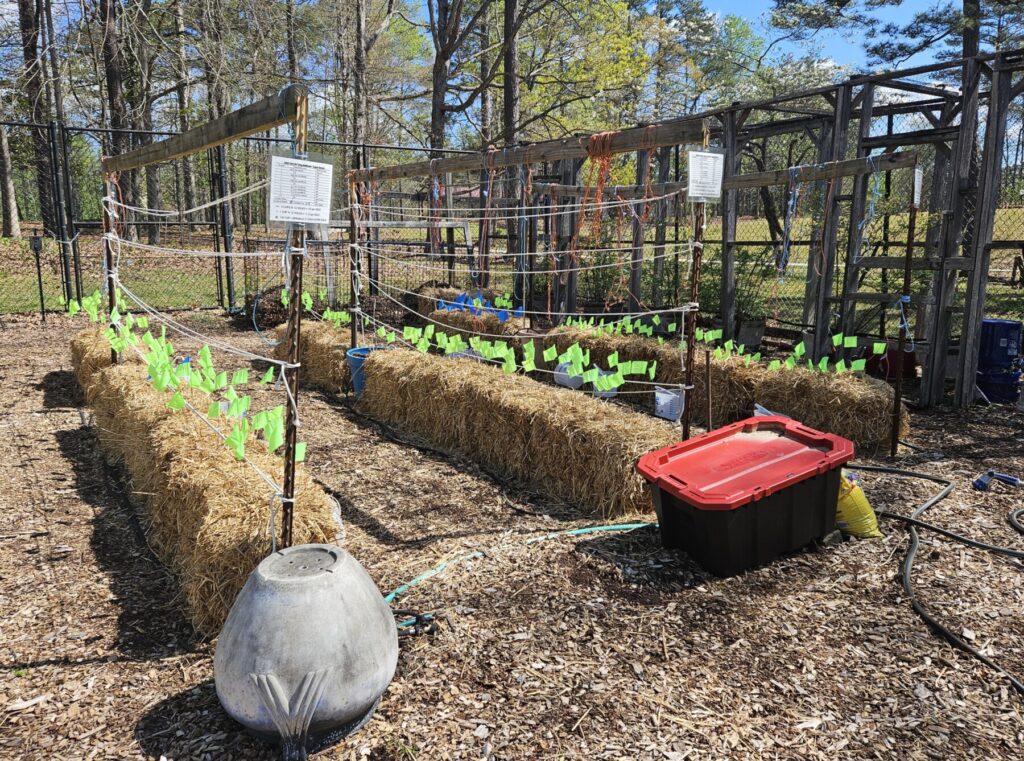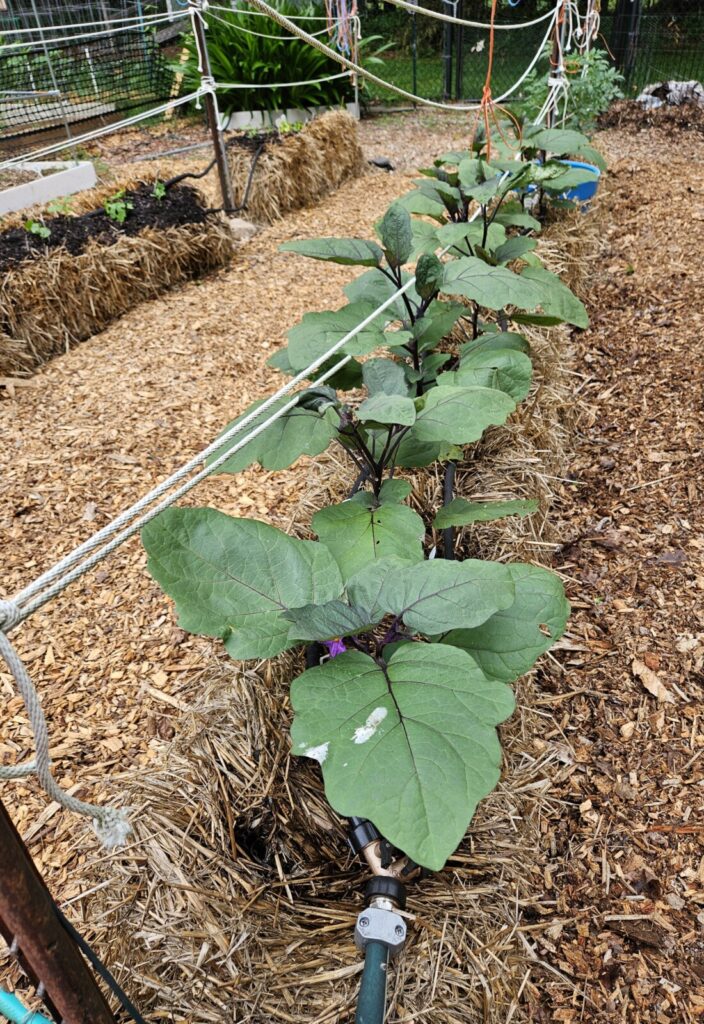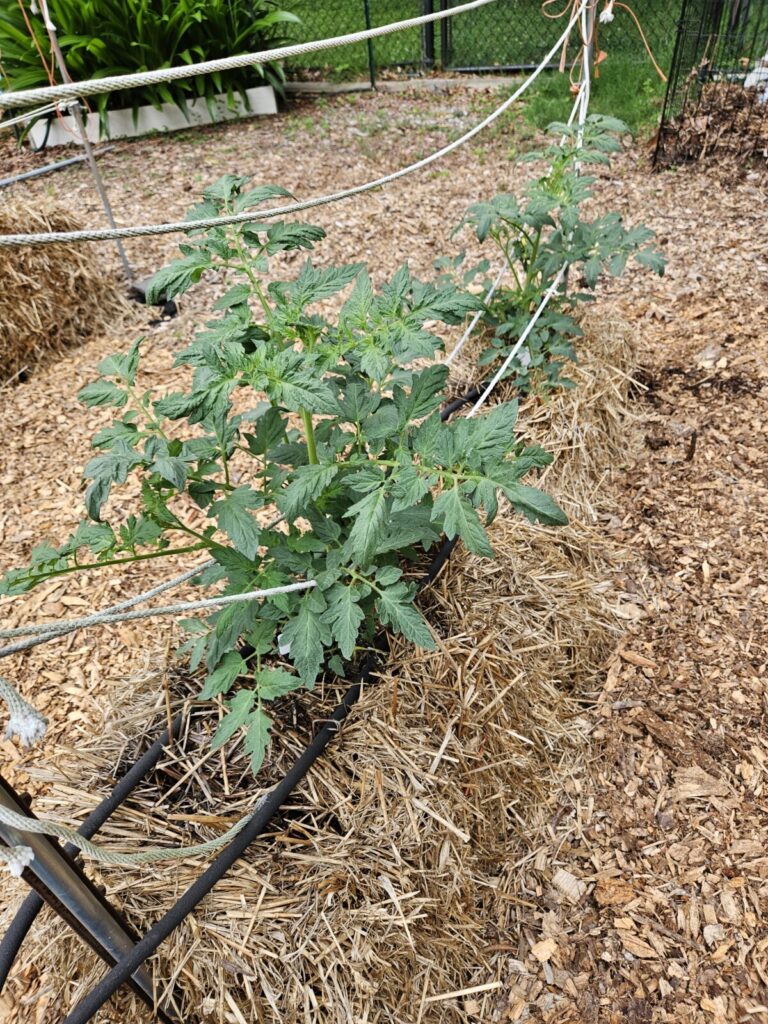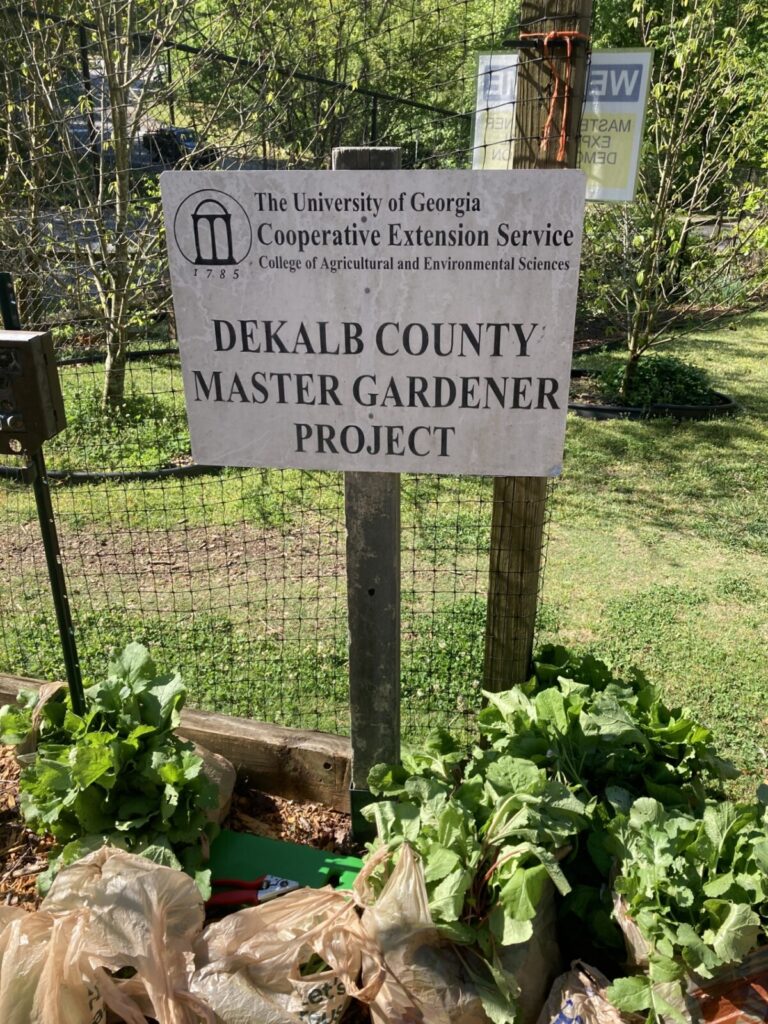On a gorgeous April morning, I visited Master Gardener site leader, Janet Hanser at the Demonstration Garden at Brook Run Park in Dunwoody. I wanted to speak with her about a unique project she’s been leading. She has been using the straw bale gardening method for 10 years in the back third of the small, 3150 square foot Master Gardener site.
I joined Janet on day 14 of the decomposition process that must take place in order to garden inside the bales. “In theory, it should take 18 days but you’re decomposing the bale so it’s based on when the temperature reaches 140 degrees and then it needs to cool before we can plant. Sometimes it can take a good 3 weeks or longer.” At this point, the bales were over 100 degrees. “We won’t plant until 85 degrees. Adding water helps cool it down.” Janet explained. The process is alternating additions of BaleBuster fertilizer and water. “The goal is to turn the internal portion of the bale into compost.”
BaleBuster is a 13% Nitrogen fertilizer that is inoculated with common soil bacteria and fungal spores, that help degrade the wheat straw. On day 10 of the fertilizer protocol, wood ash, and bone meal are added to complete the fertilizer additions. The Master Gardeners use lawn flags to mark the holes where the fertilizer is forced into the center of the bale. Janet says it took a lot of trial and error to figure out the best way to get it to actually reach the center. “We need 12 holes in the bale to evenly distribute the fertilizer in the bale. When we make the holes, we use the flags to mark them and use a long neck funnel that reaches into the middle of the bale.”

I asked Janet what kind of plants can grow in a wheat straw bale garden.
“We grow anything that is not a perennial, any vegetable. We generally will plant insect deterrent flowers in between the beds, like marigolds. We used to plant the side of the bales with flowers, violets cascading. In theory, you can plant all sides, but need to give yourself space to access the crops by making wide rows. For larger plants like tomatoes you can plant one per bale and peppers can be 2 per bale. When we plant we open the bale up a little, add some potting soil into the holes, deep enough to cover the root ball, and set up irrigation”


Janet told me that nothing goes to waste in this garden. They do all they can with the resources and limited space they have. “We use the bales at the end of the decomposition process to build beds in the front. It’s a small space, so a way we get around having to rotate crops that we plant repeatedly is that we rebuild the rows and straw bales are new every year. The BaleBuster fertilizer and compost is so rich and then we amend the rest of the garden with it.”
Straw bale gardening is a great way to grow on top of concrete or any other impermeable space you might have. “This garden used to be a building so there is not a lot of soil before you hit concrete,” Janet explained.
While most of the crops go into the bales and seedlings, there is one crop that they do direct seed and it’s not one you see in most gardens here in Georgia.
“We dedicate a whole row of bales to Japanese bitter melon. Cucumber beetles won’t touch it.”
Janet first noticed the lack of insect damage on the crop in a community garden neighbor’s plot, right on the other side of the fence from the demonstration garden. While the Master Gardeners’ traditional cucurbit varieties were decimated by pests, the bitter melon was doing great.

Janet likes to grow crops that she knows the people utilizing the food bank want to eat. There is a large Latino and Asian population that loves hot peppers so we grow a lot of them- and are sure to label them! I try to tailor what we’re growing to what the families are looking for. They want to eat what they know”
And luckily, the Japanese bitter melon is a hit!
They are seeded into the bales with a 2-3 inch layer of potting soil on top of the irrigation.
The team of volunteers has worked hard to donate produce to the Community Assistance Center Food Pantry in Sandy Springs since 2006. Last year they donated 326 lbs. of produce and have even donated up to 500 lbs. In the past. Clearly, their hard work and innovative techniques are paying off!


If you are interested in learning more or volunteering in the garden, please contact site leader Janet Hanser, jhanser@bellsouth.net, or ANR Agent Caston Noorullah, c.noorullah@uga.edu.
Leave a Reply to Janet Hanser Cancel reply